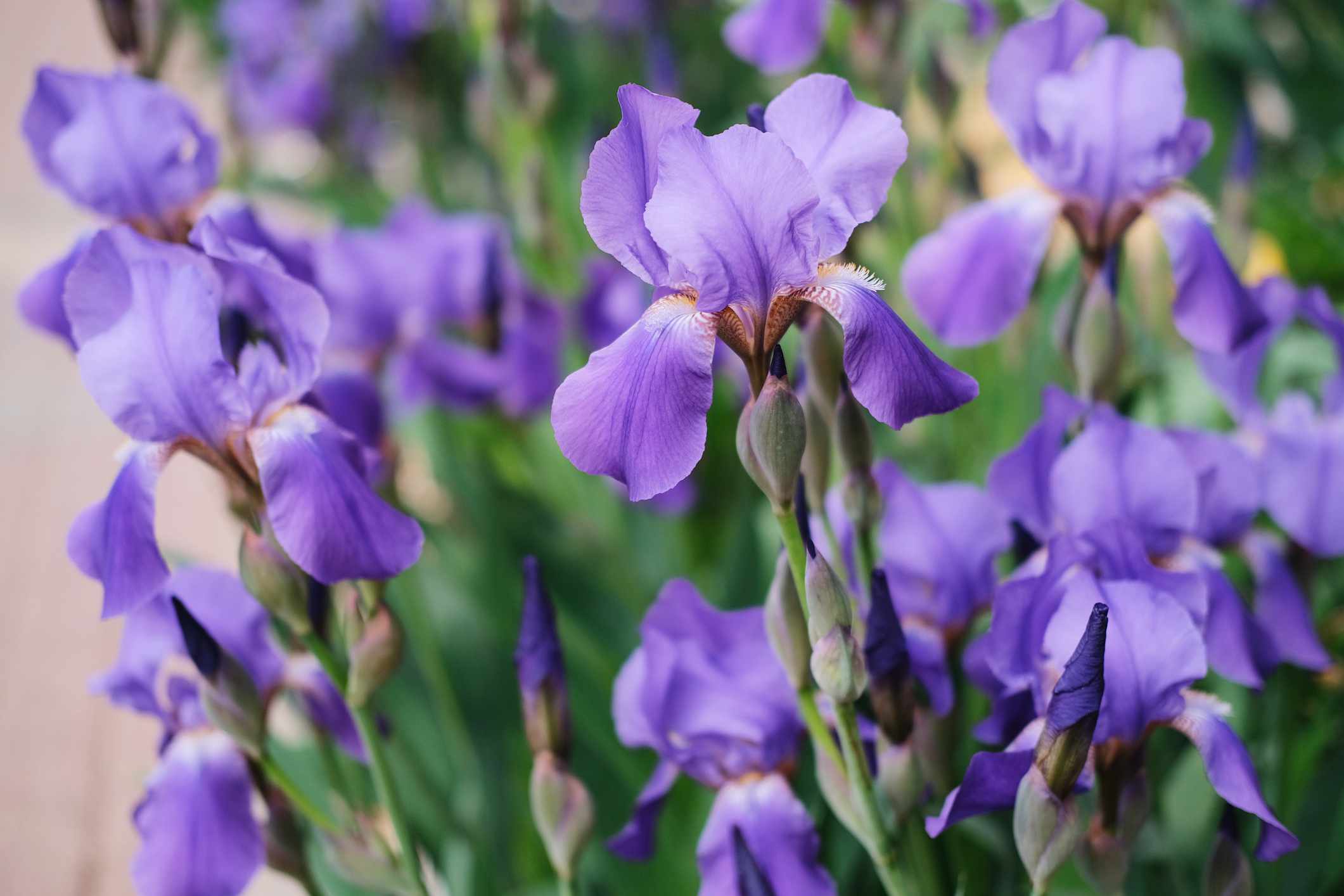

Showy irises are easy-to-grow, tall perennial flowers that are typically pretty hardy. That means you don’t often have to dig up and store the bulbs or rhizomes over winter. However, there are times when conserving them can be beneficial.
Read on to learn when and how to store iris bulbs and rhizomes to increase the chances of successful replanting when the timing is right.
Do I Need to Store Iris Bulbs or Rhizomes?
There are over 200 iris species and thousands of iris cultivars. Most irises are rhizomatous plants, meaning they grow from underground modified plant stems. Some iris species grow from bulbs, another form of underground nutrient storage structures.
Irises tend to be pretty hardy, and bulbs and rhizomes don’t usually need to be removed from the ground to store overwinter in the way that some more tender species (such as canna bulbs) might.
However, you might want to store perennial iris bulbs or rhizomes to keep them for transplanting to a new yard after a house move, to pass on to friends or family after dividing overcrowded plants, or to overwinter unusually tender species when you have harsh winters.
Want more gardening tips? Sign up for our free gardening newsletter for our best-growing tips, troubleshooting hacks, and more!
When to Store Iris Bulbs or Rhizomes
Iris bulb and rhizome storage timing and processes vary depending on the species. Whatever type of iris bulb or rhizome you have, don’t store it for more than one year. These nutrient-filled structures are unlikely to survive longer than this out of the ground.
Typically, you’ll want to lift iris bulbs or rhizomes out of the ground when they are finished flowering and the leaves are dying back. You can then transplant most irises back into the ground in the fall. Don’t leave transplanting the bulbs or rhizomes too late. You want them to start establishing before hard winter weather. That means at least six weeks before the first expected first date. Below is some general guidance for some common iris types:
- Reticulata irises: They bloom in early spring and grow from bulbs. You can store them through the summer and replant them between September and mid-November.
- Dutch irises: They bloom in midsummer and grow from bulbs. These can also be replanted in the fall.
- Bearded irises: Bloom in summer and grow from rhizomes. These can be replanted in the fall or early spring after the danger of frost has passed.
How to Store Iris Bulbs or Rhizomes
Learning how to store iris bulbs or rhizomes isn’t an exact science, and it can be tricky. There’s a risk of drying out or fungal problems developing. However, these guidelines can help you have a better chance of success.
- Dig up the bulbs or rhizomes, taking care not to damage the structures.
- Shake off any remaining soil gently.
- Inspect the bulbs or rhizomes. Discard any that show signs of rot, damage, or disease.
- Use sterile scissors to trim any attached foliage back on the bulbs or rhizomes to just a couple of inches.
- Wear gloves to dust the bulbs or rhizomes with an antifungal powder (optional).
- Keep the bulbs or rhizomes in a warm, dry location out of direct sunlight initially. You want them to be dry before storing. Otherwise, there’s a greater risk of rot developing.
- Once the bulbs or rhizomes are dry, select a cool, dry location with excellent air circulation. Avoid storing in direct sunlight or where temperatures fluctuate. Ideal temperatures are between 40°F and 50°F.
- Place the bulbs or rhizomes in a single layer within a shallow cardboard box with breathing holes. If you are concerned about humidity, place it on a layer of sand, peat moss, or wood shavings.
- Alternatively, use breathable paper bags or wrap the bulbs or rhizomes individually in one sheet of newspaper to promote air circulation and reduce the chances of mold or rot developing.
- Regularly check for signs of rot or drying out. Discard any bulbs or rhizomes showing signs of rot to prevent the risk of it spreading. You can lightly mist those showing signs of shriveling.
Tips for Caring for Iris Bulbs or Rhizomes
Even when you leave iris bulbs or rhizomes in the ground, there are certain care tips worth being aware of to help these perennial flowers put on their best show.
- Get the depth right: When planting iris bulbs, you want them to be at least 4 inches deep into the soil (or at least twice their height). Plant iris rhizomes close to the surface to reduce the risk of rot. Position them horizontally with the roots underground and the top section barely covered by soil.
- Watch out for pests: The iris borer is a common pest for rhizomatous species. A sign of these bugs is tan, water-soaked streaks on the leaves. If you don’t rapidly remove these pests, they can cause rotting of the rhizome.
- Divide when overcrowded: Divide bearded irises and other rhizomatous types every three to five years to prevent overcrowding and encourage the best blooms and vigor.
- Avoid moisture mishaps: Soaking iris bulbs for 24 hours before planting is not necessary but can be beneficial. However, too much moisture for iris rhizomes encourages rot. Water thoroughly on planting and then sparingly going forward.
- Give mulch a miss: Avoid mulching rhizomatous irises, as this can result in too much moisture retention.
- Don’t cut foliage back too early: Cutting back iris leaves sooner than six to eight weeks after they finish blooming isn’t ideal. Fewer leaves limit photosynthesis, and the rhizomes will have fewer nutrients for their dormant period.
Get the best products from Amazon








